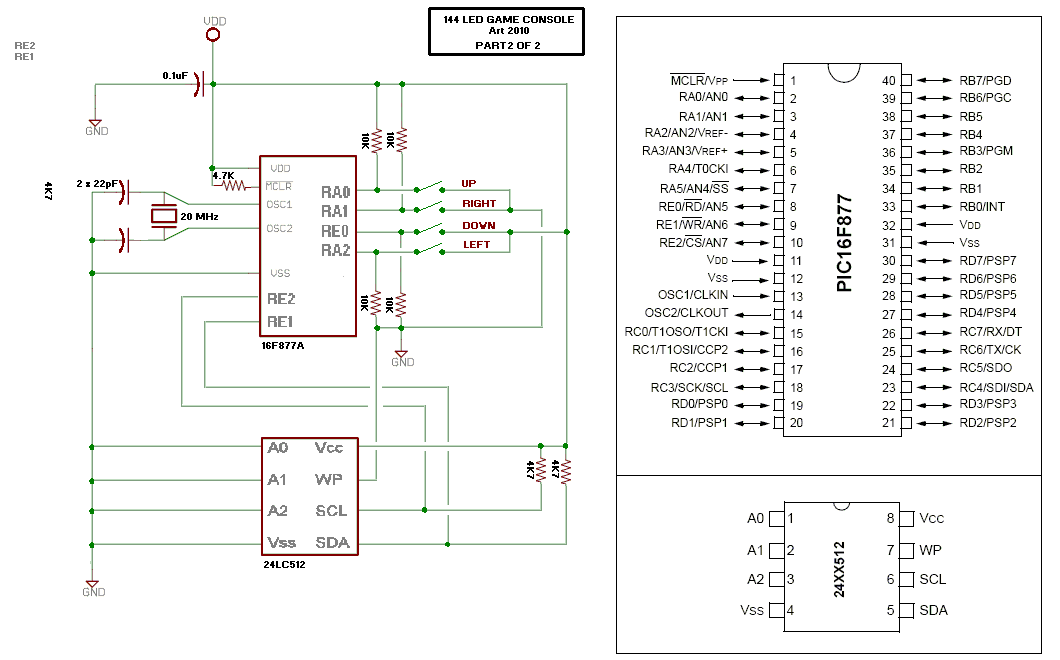144 LED Game Console
Featuring original recoded clones of two classic games: Snake and Tetris!
Art 2010 -------------------- Note: This is not an official Tetris product.
144 LED Game Console - Bill Of Material
001 x Microchip Pic 16F877 or 16F877A microcontroller
001 x 40 pin DIL socket
018 x BC549C or similar Transistors
145 x LEDs (144 of one colour, and 1 of another for the power/error indicator)
001 x 20 MHz Crystal
009 x 330R Resistors
018 x 1K2 Resistors
004 x 10K Resistors
001 x 4K7 Resistor
002 x 22pF Disc Ceramic Capacitors
001 x 0.1 uF Monolythic Capacitor
001 x Prototype Printed Circuit Board (display)
001 x Small Prototype Printed Circuit Board (joypad)
004 x Momentary Push Buttons
Display schematic is made from a modified version of a display by B.Morse.
See YouTube Demos of the Games Here:
http://www.freewebs.com/defxev/scroll.htm
Code for the Microcontroller is coming soon!
PS. If someone would like to make a PCB layout, that would be cool
Cheers, Art.











 If you tilt the board 90 degrees the joystick pad (and display) can "rearrange" to the correct orientation?
If you tilt the board 90 degrees the joystick pad (and display) can "rearrange" to the correct orientation?






Bookmarks